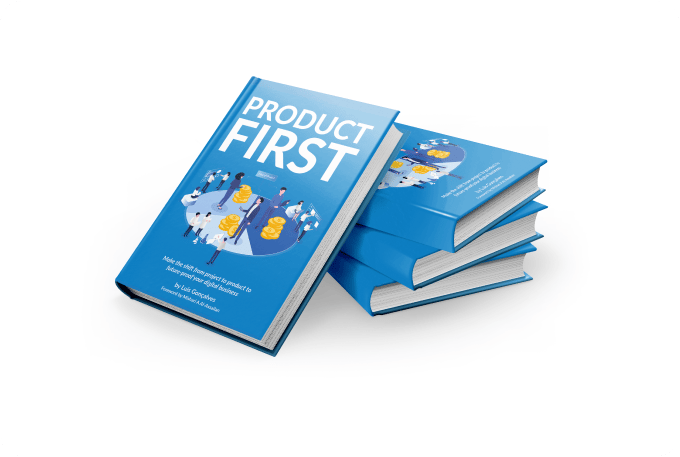Share this
Addressing Communities of Practice Challenges: What You Need To Know
by Luis Gonçalves on Jan 13, 2024 5:29:56 AM
Knowledge has always been central to the success of any business. Whether it’s about the product, technology, process, or strategy – it is imperative for companies to invest and increase their intellectual capital to stay ahead of the competition.
But unlike other competitive resources, knowledge belongs to individuals, not the organization. Thus, “knowledge management” would mean creating organizational conditions wherein individuals are encouraged to create, transfer, apply, and share knowledge.
Even without the direct intervention of the management team, knowledge creation, and sharing can happen spontaneously between employees as they form groups or networks.
They collaborate beyond structures and formal ties, which is the opposite of the top-down structures of organizations. We now call these groups or networks “communities of practice”.
Throughout our blog posts, you’ve probably learned already how CoPs can greatly benefit your organization in so many ways. But just like other management frameworks, CoPs are not without limitations.
In this post, let us talk about some of the major communities of practice challenges and what you, as a leader, can do to turn these limitations into opportunities for success.
Managing Communities of Practice
Given their informal nature, the first question that you and almost everyone else in the leadership team of your organization might ask is this – how do you manage communities of practice?
A top-down approach is not suitable for communities of practice. You may feel the need to micromanage these groups just like other typical teams in your organization.
But instead of helping them thrive, controlling the processes of communities of practice can just impede the flow of knowledge sharing.
So in what ways can you ensure that these communities adhere to the goals, processes, and culture of your organization?
In a case study entitled Building Communities of Practice that Work, researchers argued that the effectiveness of communities of practice, particularly in terms of knowledge assimilation and transfer, depends on two things:
- The commitment was given by the organization to the community.
- The level of participation and involvement of the members in the community.
When managing a community of practice, your goal as a leader is not to micromanage, but rather support and nurture it by providing the resources they need.
That’s what Xerox Corp did to support a community of engineers who were exchanging ideas about how to solve copy machine problems.
The company soon found out that these engineers sometimes face equipment problems that are not found in training books or documentation provided by the company.
And while they were all eager to share knowledge, it was impossible to share it to Xerox’s 24,000-member customer service unit. That led to the creation of Eureka – a knowledge management system for Xerox employees.
In addition to providing them with the resources needed to collaborate effectively, you also want to ensure that the members have a high level of participation and involvement in community activities. How do you do this?
You can concentrate your efforts on the following:
- Promote individual involvement – it is only when an individual perceives it to be useful to him does he commits to participating in the community. When promoting communities of practice, let your staff know how becoming part of these groups can contribute to their personal or career development. Just as you find organizational value from CoPs, you also want the members of the community to find personal value.
- Enhance social relations – CoPs are founded on the concept that “learning takes place in a social context”. Thus, cultivating relationships among its members is highly important. Apart from the primary objectives of the community, you also want to allow them to socialize, develop friendships, and be more comfortable with each other.
Engaging Community Members
Another major challenge that organizations face when implementing communities of practice is engaging members.
Active participation and interaction are crucial for the community to thrive and for the members to achieve amazing results. Here are the things you can do to keep them engaged:
- Ensure that the community addresses the needs and interests of the members.
- Leverage social media to support collaboration. Through social media, members can send questions, share ideas, and express their opinions without feeling pressured to create a formal letter or email to the rest of the community. It makes a perfect, safe, and engaging online platform for communications, socialization, and knowledge sharing. Now, there’s a “Facebook for work” called Workplace already that you might want to integrate into your CoPs.
- Appoint a community leader. In addition to taking the lead in the activities and initiatives of the community, this person will also help out in keeping the community engaged by being the members’ go-to resource for their questions, concerns, and anything else they need.
Battling Organisational Hierarchy
The third and really difficult challenge that comes along with fostering communities of practice is ensuring that they don’t get swallowed by the organizational hierarchy.
Being conceived within an organization, it is just logical to assume that communities of practice must coexist with the existing organizational hierarchy.
This is essentially problematic because communities of practice are not naturally aligned with the hierarchical structure of your companies in so many ways. For instance, the relationship among members is horizontal, while it is vertical in the organizational chart.
Apart from the reporting relationship, a typical company follows a top-down approach in all other matters, from exercising control and authority to communicating. Whereas in CoPs, the relationship takes place between individuals with similar or equivalent functionality.
It is important to protect the natural, organic structure of CoPs. Otherwise, they would have less room and opportunity to engage in activities necessary for knowledge management. They shouldn’t be tied to the verticality of your organizational chart.
What is essential is that these communities adhere to your organizational culture which is defined as a set of practices or a way of doing things. CoPs should embrace your corporate identity in the way they interact and conduct their activities.
Communities of practice are among the most helpful tools for performance and knowledge management. By identifying the key challenges that confront communities of practice, you will be in a better position to support these communities and maximize the value they bring to your organization.
Did you like this article?
We enable leaders to become highly valued and recognized to make an impact on the World by helping them to design Digital Product Companies that will thrive and nourish in the Digital Age, we do this by applying our own ADAPT Methodology®.
If you are interested in knowing if you have what it takes to design and build a great digital product company simply take our Digital Leadership Influence Scorecard.
If you want to know how we can help you to start your transformation please check out our: Training.
If you are interested in doing a transformation in your company please check out our: Consulting.
Share this
- Agile Methodologies (18)
- Product Strategy (18)
- OKRs (16)
- Scrum (16)
- Product Mindset (14)
- Project To Product (10)
- Agile Retrospectives (9)
- CoPs (9)
- Knowledge Sharing (9)
- Time To Market (8)
- Product Discovery (7)
- Continuous Improvement (5)
- Strategy (5)
- Scrum Master (4)
- Content Marketing Strategy (3)
- Product Owner (3)
- Technical Excellency (3)
- Digital Transformation (2)
- Innovation (2)
- Scaling (2)
- Team Building (2)
- Business Model (1)
- Cost Of Delay (1)
- Customer Feedback (1)
- Customer Journey (1)
- Customer Personas (1)
- Design Thinking (1)
- Digital Leadership (1)
- Digital Product Tools (1)
- Go To Market Strategy (1)
- Google Design Sprint (1)
- Lean Budgeting (1)
- Lean Change Management (1)
- Market Solution Fit (1)
- Organisational Impediments (1)
- Outsourcing (1)
- Product (1)
- Product Metrics (1)
- Product Roadmaps (1)

Organisational Mastery
Get your free copy

ADAPT
Get your free copy

Product First
Get your free copy


